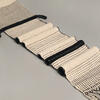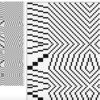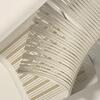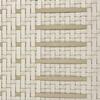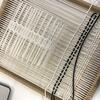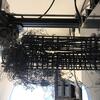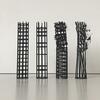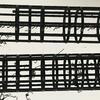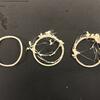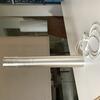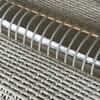Weaving Code
Weaving Code is located at the crossroad of hand weaving, programming and 3D printing.
The basic computer language made of 0s and 1s originated in the automation of looms. Weaving code connects hand-weaving to 3D printing. While a piece of textile is produced on the loom, an object is generated by the computer using the same binary code. By turning weaving patterns into a programming language, Weaving code aims to explore how traditional crafts and digital tools can enhance each other and offer an alternative interpretation of technology at large.
–
During the residency at IMAL Fablab, I will leave aside the code and focus on exploring the aesthetical and technical opportunities created by the combination of woven textiles and 3D printed pieces. The research will mix moments of weaving, theoretical research and experiments with the 3D printers at IMAL fablab (Creality Ender-3 Pro & Stacker S2).
_
#201124 - With the goal in mind to 3D print large pieces and the dual printing of the Stacker, I try to draw some assemblies in which a piece can be assembled with its clone to build longer tubes/structures.
#201204 - Test of 3D printing thin structures, 50% speed. It kind of worked but went fuzzy in the end. Might try again slightly thicker.
#201218 - Learning lasercutting and using it to make paper model of potential weaving. I used the laser to both cut (>13/13/100) and give a light brown color on some parts (12/12/500).
The tests show the results for the folowing settings, from left to right:
12/12/500 . >17/17/100 . 15/15/500 . >15/15/100 . 20/20/500 . 25/25/500 . >10/10/100 . >13/13/100 . >12/12/100
I chose the lightest brown (12/12/500) for the color but also cause less burning means less dust and reduces the risk of making the white parts dirty.
The paper model show more clearly the structure used in the textile weave to create "openings" and oppotunities to connect with 3D printed elements, such as tubes.
#202029 - Selection of material and stat of weaving on a simple frame to test the weaving structure and materials before setting up the 4 shafts loom.
#210109 - Attempt of printing with flexible filament on the Stacker S2. I tried with the Filaflex 95A which is the stronger of Recreus flexible filaments but still the prints failed one after the other, could'nt go higher than 5mm hight. Together with Xavier we also made a trial with NgenFlex which is even stronger, but the feeder of the Stacker doesn't seem to like flexible filaments and creates "knots" pretty quickly.
#210112 - Several trials of prints with Willow Flex 3dk on the Creality Ender 3 pro. The material is quick sticky, and is pretty liquid when getting out of the extruder (175°-185°).
Those trials are quite interesting for me as I see cool possibilities in the combination of woven textile and flexible prints. So far what I learned about 3D printing with flexible filaments during my residency at IMAL Fablab and before:
-Slowlier is better. If a print failed, trying the exact same file with a very reduced speed can work or improve greatly the quality of the print.
-More flow works for me. I don't know if this is due to feeders that don't deal with regular filaments the same as they do with flexible ones, but I tend to increase the flow to 110% or 120% to get good results (in the tuning options at the beginning of the print).
-Simple lines make it simpler. As retraction is a more blurry process with flexible filaments, I prefer to print long and beautiful lines rather than small grids that would require ways and backs and multiple retractions. Making the print simpler asks a bit of playing in Cura (or other slicer). Most of the time I chose to print thick walls and no infill. But this also depends on the shape to print.
-A lower pression from the feeder on the filament is good. It will avoid "knots" at the entrance of the bowden tube.
#210113 - The print of the 33 cm high flexible tube worked after several failed attempt. I decreased a lot the printing speed. It initially was of 25mm/s in Cura and on the printer I lower it again to 33%.
Cette résidence a été supporté par la COCOF.
